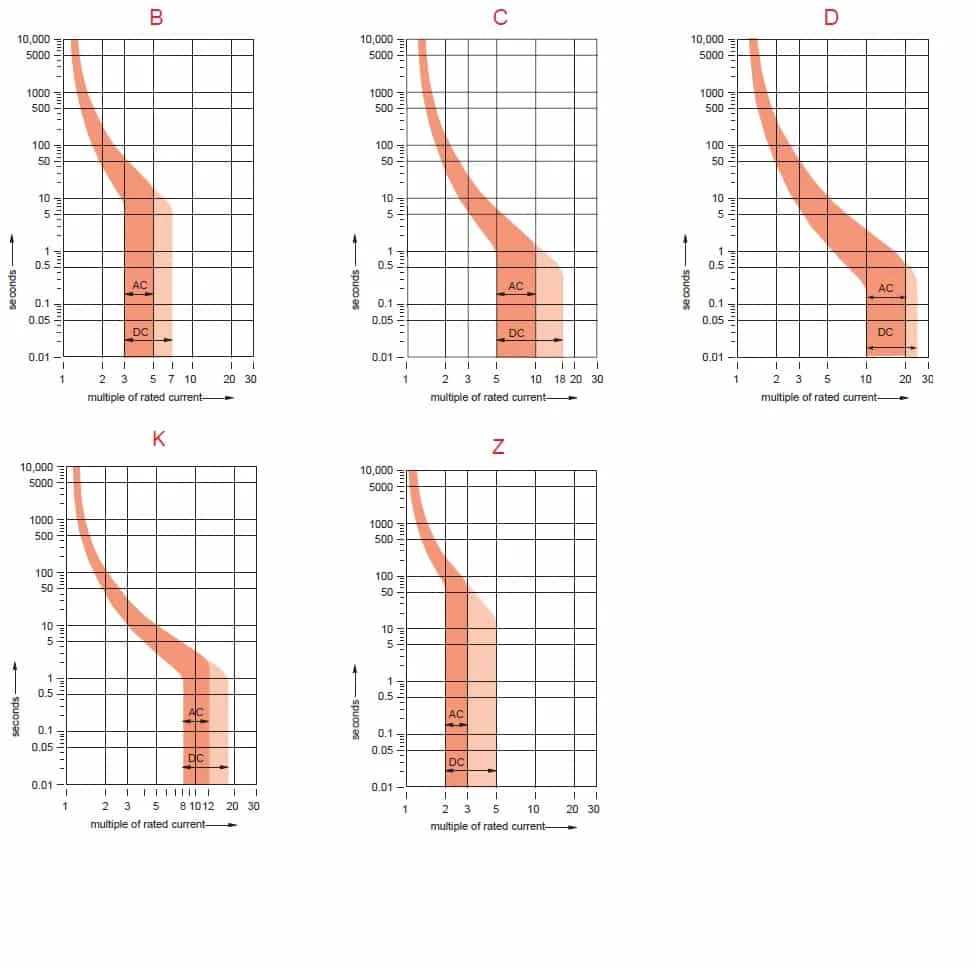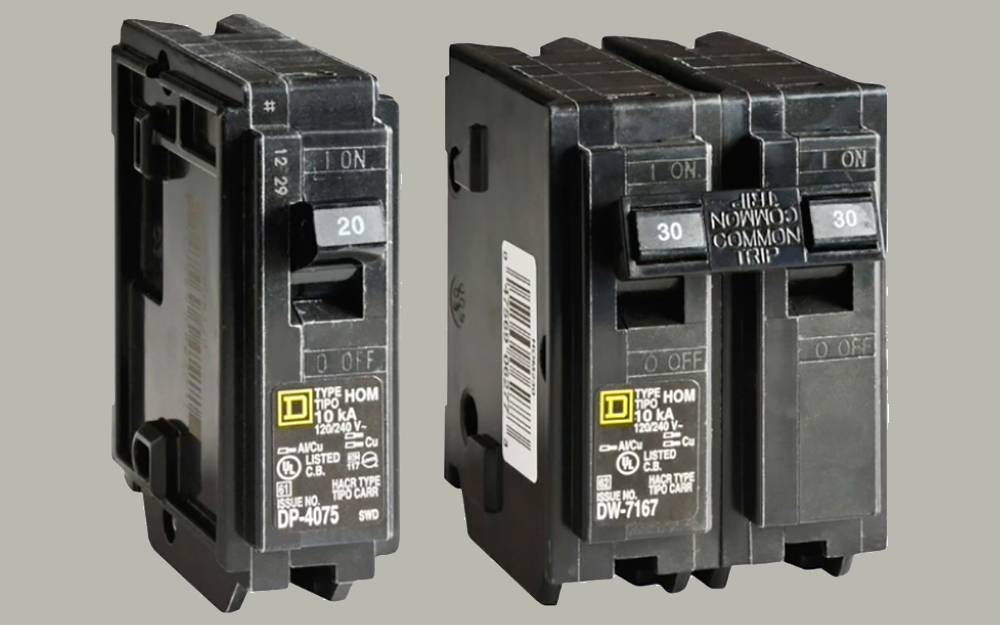Circuit Breaker Types A B C D

Dual function cafci gfci circuit breaker types protect against both arc faults and ground faults which can save time and money while providing more safety than the other versions.
Circuit breaker types a b c d. Set your store to see local availability add to cart. Unlike a fuse which operates once and then must be replaced a circuit breaker can be reset either manually or automatically to resume. Double pole type a wadsworth replacement circuit breaker model ubia220ni 95 98 95 98. These three ratings are determined by the level of overload which causes the mcb to trip.
This is the minimum current at which the circuit breaker will discontinue the flow of electricity or trip. Type b mcbs are usually used in domestic installations where the inrush currents and surges are low. 2 pole type a replacement thick circuit breaker model ubitba215. However an understanding of the differences between these types of devices can help the installer overcome problems of unwanted tripping or make a suitable.
B type mcbs operate at an overload of 3 to 5 times the rated current. Mcbs miniature circuit breakers are categorized into b c and d types. Type z mcbs operates for a current value between 2 to 3 times the rated current with an operating time of less than 0 1 second. Connecticut electric new ubia 20 amp 2 in.
It does this to protect devices plugged into the circuit from sudden rises in levels of current. Type c mcb are used for motor circuits circular saws and smaller pumps air conditioners and larger lamp groups. Less common this type trips between 10x and 14x the rated current. A circuit breaker is an automatically operated electrical switch designed to protect an electrical circuit from damage caused by excess current from an overload or short circuit its basic function is to interrupt current flow after a fault is detected.
Type z miniature circuit breakers. The decision to use type b c or d miniature circuit breakers for final circuit protection in residential commercial industrial or public buildings can be based on a few simple rules. A type d breaker trips when its current is 20 times its rated current. When installing check the latest national electrical code as requirements in most areas call for afci breakers in all rooms of the house under the 2017 code update.
Type a k and z mcbs have extremely small operating time compared to type b c and d mcbs. Trips between 5x and 10x the rated current. Example a 16a circuit breaker would need between 160a and 320a before it trips. This requires a circuit breaker with a type c or type d characteristic.
Trips between 10x and 20x the rated current.


















